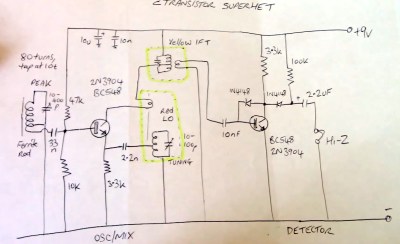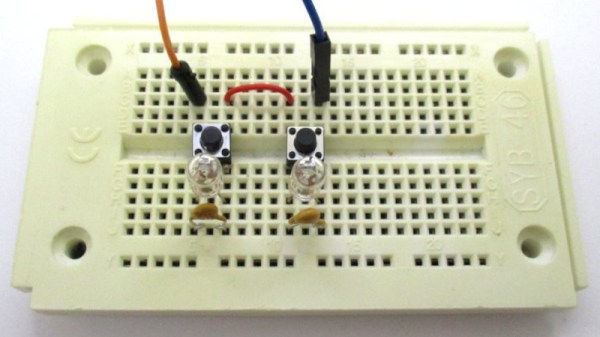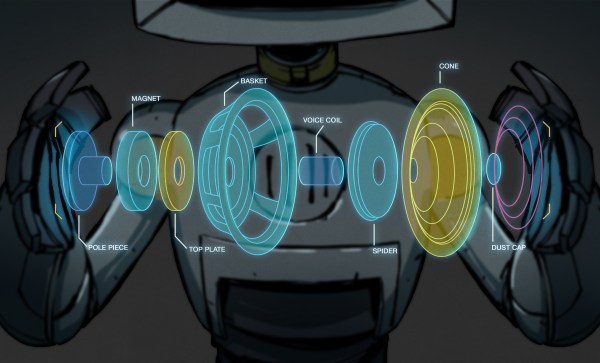If you cultivate an interest in building radios it’s likely that you’ll at some point make a simple receiver. Perhaps a regenerative receiver, or maybe a direct conversion design, it’ll take a couple of transistors or maybe some simple building-block analogue ICs. More complex designs for analogue radios require far more devices; if you’re embarking on a superhetrodyne receiver in which an oscillator and mixer are used to generate an intermediate frequency then you know it’ll be a hefty project. [VK3YE] is here to explode that assumption, with a working AM broadcast band superhet that uses only two transistors.

A modern portable radio will almost certainly use an all-in-one SDR-based chip, but in the golden age of the transistor radio the first stage of the receiver would be a single transistor that was simultaneously RF amplifier, oscillator, and mixer. The circuit in the video below does this , with a ferrite rod, the familiar red-cored oscillator coil, and a yellow-cored IF transformer filtering out the 455 kHz mixer product between oscillator and signal.
There would normally follow at least one more transistor amplifying the 455 kHz signal, but instead the next device is both a detector and an audio amplifier. Back in the day that would have been a germanium point contact diode, but now the transistor has a pair of 1N4148s in its biasing. We’re guessing this applies a DC bias to counteract the relatively high forward voltage of a silicon diode, but we could be wrong.
We like this radio for its unexpected simplicity and clever design, but also because he’s built it spiderweb-style. We never expected to see a superhet this simple, and even if you have no desire to build a radio we hope you’ll appreciate the ingenuity of using simple transistors to the max.


















